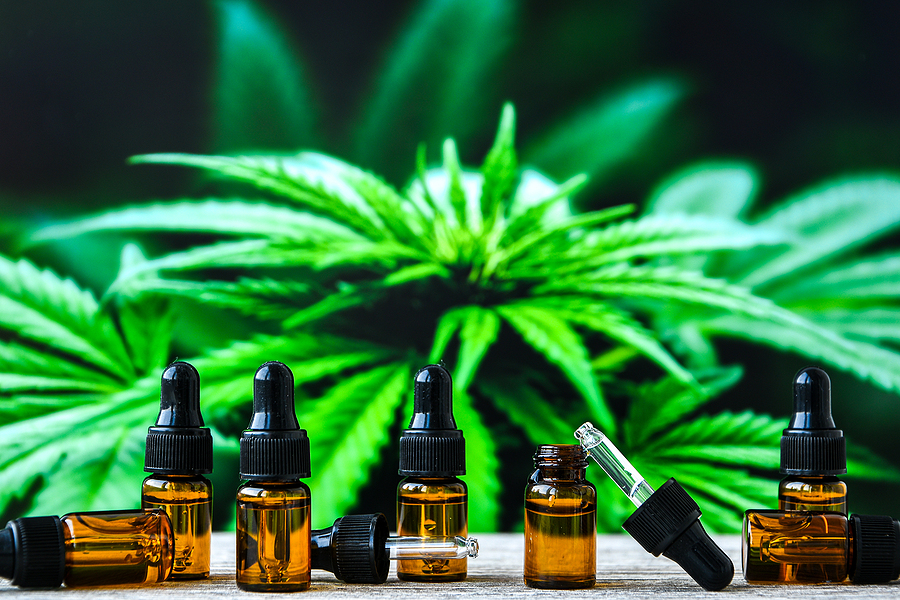Over the past few years, CBD products have increased in popularity, as more research has been undertaken on a compound in hemp and cannabis that has somewhat unsung effects.
The novel food is sold in a variety of ways, from oils to capsules to infused drinks, and because of this is can be difficult at times to find the most effective ways to use products and understand the different types of products and intensities available.
This article aims to reduce the guesswork involved with buying CBD, cover the most popular types of products, how CBD works, the best way to take it as a new user and how to incorporate it into a wellness routine.
What Is CBD?
CBD, otherwise known as cannabidiol is one of the two main active ingredients found in cannabis, the other being the controlled substance tetrahydrocannabinol (THC), which is the psychoactive ingredient that gets people high.
CBD does not have that effect at all, and there is no THC in products that contain CBD. A World Health Organisation report also states that CBD is not addictive and is well-tolerated.
Several types of products containing CBD have been made available and it has become popular as a treatment for insomnia, anxiety and chronic pain.
CBD interacts with our endocannabinoid system that is made up of a series of neurotransmitters that control several major functions in the body such as temperature control, sleeping, pain registration, inflammation response, eating, memory, learning and emotional processing.
What Types Of Products Are Available?
CBD has been added to a range of products, with the most widely available taking the form of CBD oils that are among the simplest and easiest products to use, with a number of drops being taken under the tongue, where it is quickly swallowed and absorbed into the bloodstream.
There are alternatives available for people who are less fond of the strong earthy taste that is often associated with CBD oil or need a less messy alternative for travelling, with CBD capsules being the most popular of these, often adding other vitamins and minerals to serve as a more general multivitamin supplement.
Oral sprays can also be taken in a similar way, which are often flavoured to avoid the taste of the oil but are absorbed into the bloodstream faster than capsules.
Finally, there are CBD gummies, which is a catch-all term for any sweet or confectionary infused with CBD. As they can be taken without a drink, taste delicious and can be eaten either as a whole or in part, they have become very popular for people who wanted to take CBD on the move.
As well as these, there are also CBD topical products, such as creams, moisturisers, serums, facial oils balms that are massaged into the skin and provide a moisturising, soothing effect.
More recently, vape pens and juices containing CBD have become very popular ways to take CBD, particularly for people who are using a vape to cut down on smoking use.
Finally, there are food products, drinks, teabags and food enhancers that are added to other foods and drinks and provide a dose of CBD to each meal.
What Are The Differences Between Different Types Of CBD
CBD can vary considerably between different products in terms of both strength and the ‘spectrum’ of the extract itself, which can lead to considerably different effects and recommended dosages.
When starting with CBD, the best piece of advice is to start with a small dose of a low-potency product, as your endocannabinoid system is not used to CBD at that point.
Most CBD oils refer to their content in terms of milligrams, which are described either per drop or per dose. If it is the latter, then to find out how much CBD is in a drop of the oil you need to divide the total dose by the number of drops.
For example, if you have a 9mg CBD oil that you take three drops a day of, that equates to 3mg per drop.
Start with a small amount and increase from there. With capsules, gummies and sprays, the amount is much easier to calculate.
Finally, CBD often comes in three ‘spectrums’, which describe how pure the CBD extract is. These are:
CBD Isolate, which through an extensive purification process has only CBD in it.
Broad-Spectrum, which contains CBD and several different extra cannabinoids, \with only THC removed.
Full-Spectrum, which contains the most complete legal form of CBD extract.
The latter two are desired because of the entourage effect, which suggests that CBD working in combination with the terpenes, flavonoids and minor cannabinoids can be more effective than isolated CBD.

